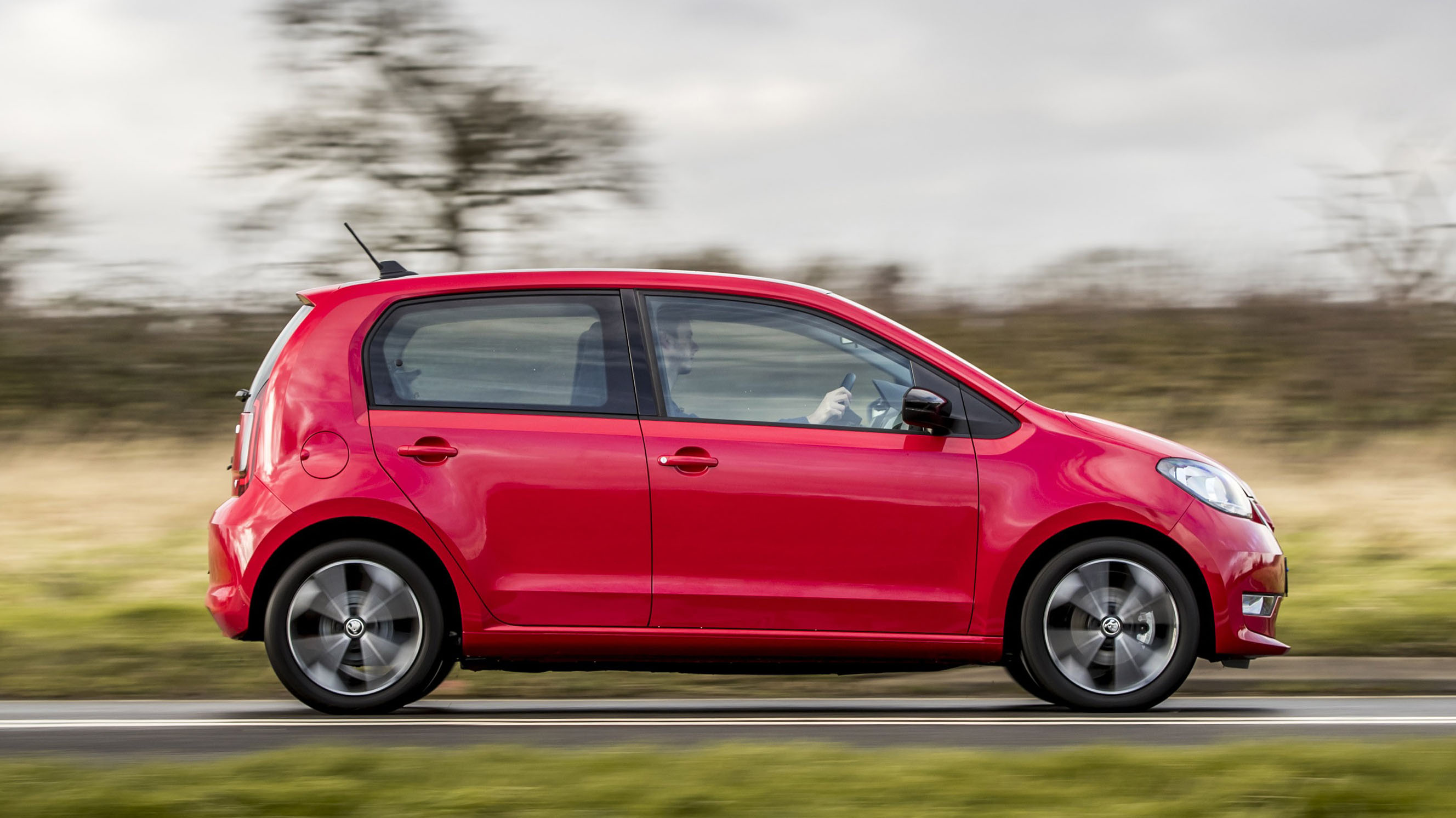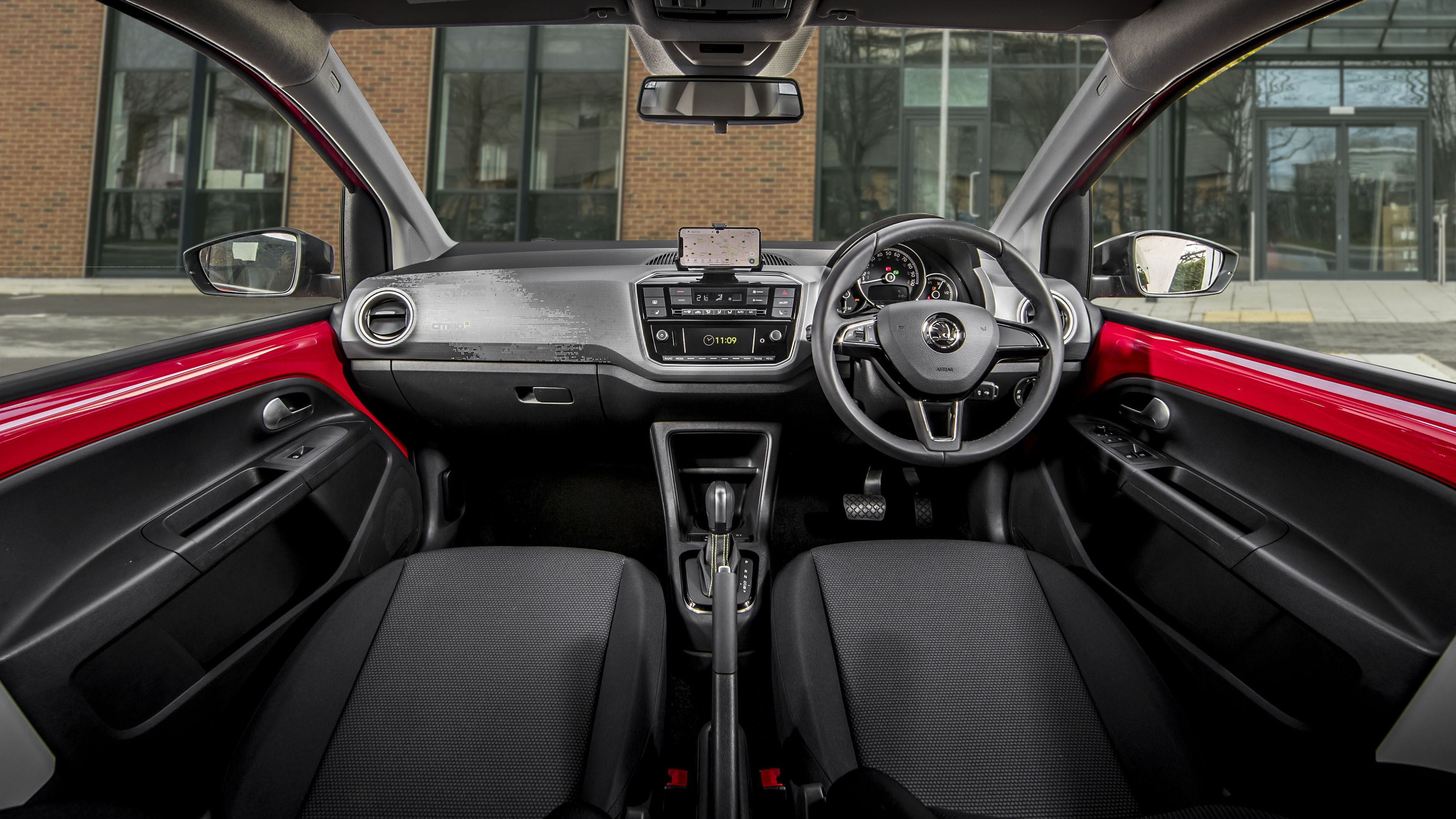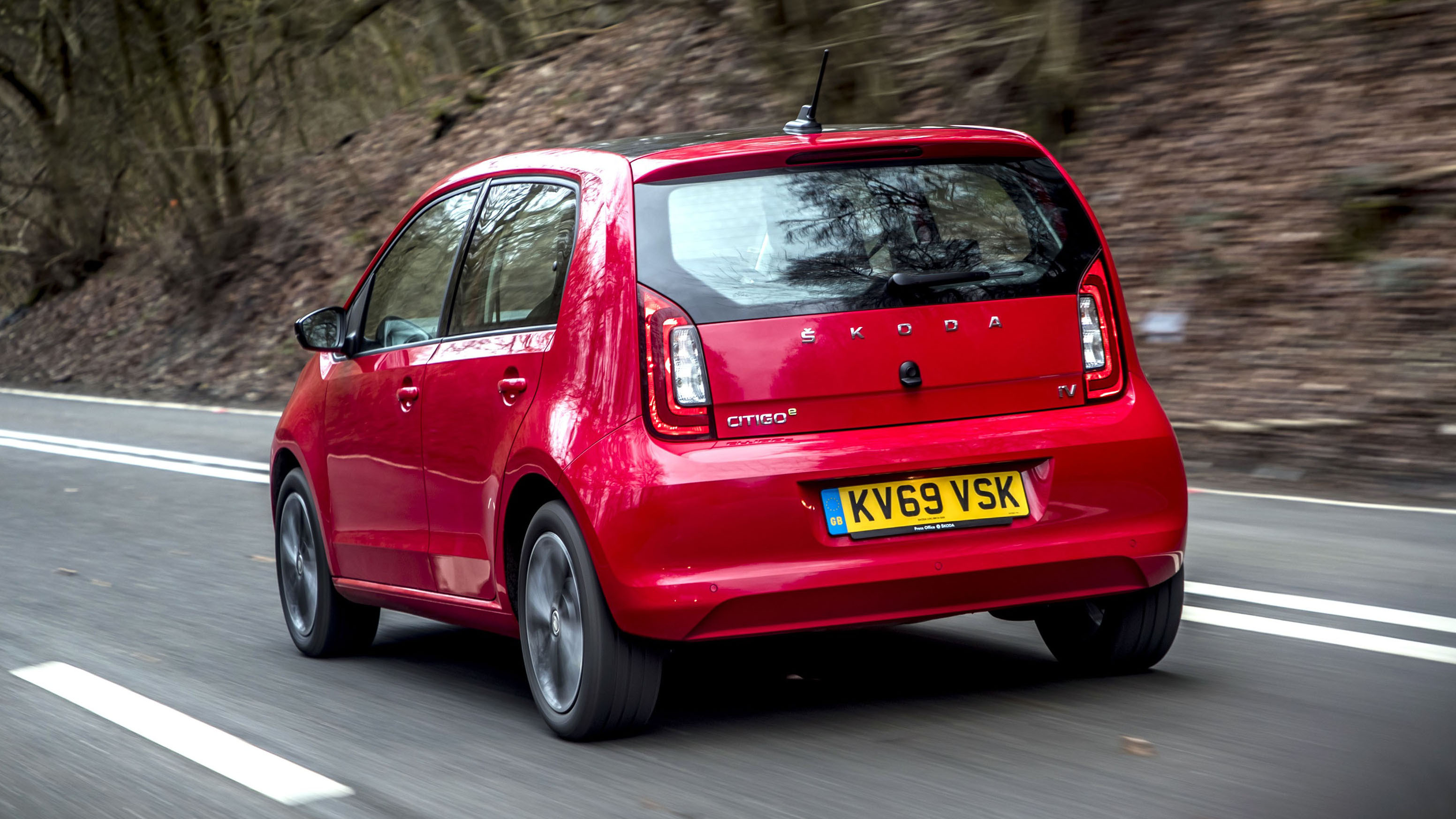
Skoda Citigo-E iV review
Interior
What is it like on the inside?
As well as introducing this electric version and killing all the petrol ones, Skoda has tried to freshen-up what is, essentially, a now nine year-old design. Most obviously the front grille has been fared-in to reflect the fact it, well, doesn’t really need one anymore.
Meanwhile inside there’s a new instrument cluster displaying EV-specific info (the rev counter is gone) and some natty graphics on the dashboard itself. Like the Up, the Citigo still feels better screwed-together in here than other cars of this ilk, but the design is dated. Especially alongside other little EVs currently vying for your attention, like the admittedly more expensive Honda e, Renault Zoe and so-on. And while having a built-in, perfectly-positioned phone holder is very helpful, so you can use Google Maps or Waze to navigate, we’d rather have a proper infotainment system capable of showing all the metrics EV owners might want to dig into.
The idea behind the cradle is that you use Skoda’s own Move&Fun app, which connects to the car via Bluetooth. It gives you maps, media and relays some vehicle info. There’s also the Skoda Connect app, which gives control over charging, pre-conditioning and so-on.
As for space, the Citigo is... not a big car. Back when it was powered by internal combustion you could have either three- or five-doors, but now it’s an EV you can only get the five-door. Which is fine - the rear doors aren’t massive, but they do make getting people and things into the back seats much easier. Predictably there’s not much space back there, and only two seats. Enough should you want to give a mate a lift around the corner, but not enough for you to moonlight as a minicab driver. Worth remembering the windows don’t wind down but pop out.
The front is spacious enough, with sufficient storage for oddments.
Featured

Trending this week
- Car Review
BMW 1 Series
- Top Gear's Top 9
Nine dreadful bits of 'homeware' made by carmakers






